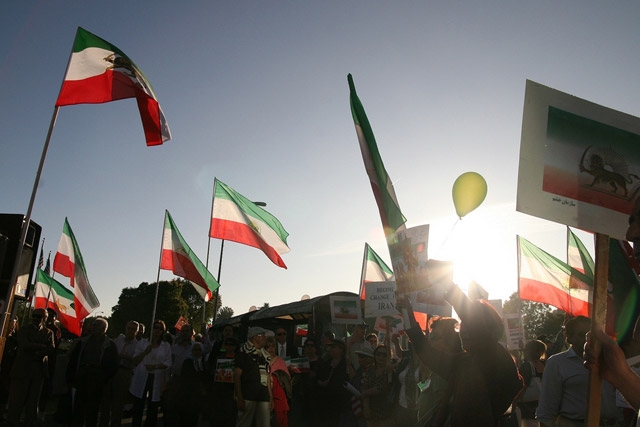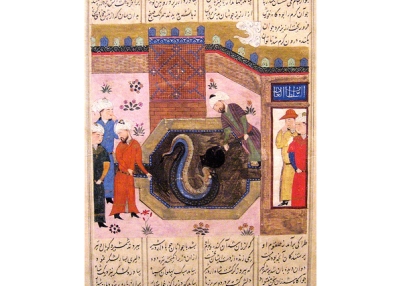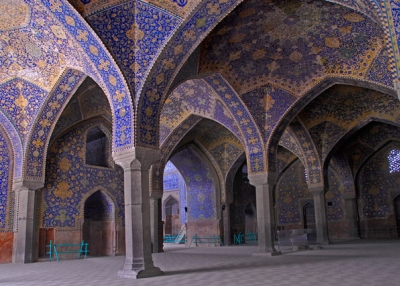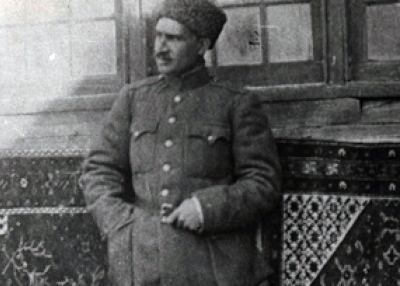Early Iranian History
From the Second Millennium BCE to the Fourth Century CE

Peoples speaking languages of the Indo-Iranian subgroup of the Indo-European language family probably entered Iran from the northeast early in the second millennium BCE. The indigenous inhabitants with whom they intermingled to from the ancestors of the later Iranian population are little known. The Elamites of the province of Fars in the southwest had a written language unrelated to Iranian. Other pre-Iranian language are unknown.
The ancient Iranians gradually developed an identity separate from the related peoples who moved on to occupy northern India. However, their cultural and religious traditions long remained similar. In Iran a priest named Zoroaster reformed the Indo-Iranian polytheistic faith along ethical lines and preached a religion with one god, Ahura Mazda, and an underlying dualistic theology pitting Good against Evil. The Avesta is the religious book of the Zoroastrian religion.
Scholars debate the dates and geography of Zoroaster’s life, but his religion was practiced at the time of the earliest historically attested Iranian dynasties, the Medes and the Persians. Media lay in the central Zagros Mountains; Periss (the name is the Greek form of Fars) lay in the southwest. The history of the Medes and of the Persian Achaemenid dynasty (named for an ancestor, Achaemenes) is known primarily from Greek historians such as Herodotus, from the great Cliffside inscriptions in Old Persian at Behistun, and from the excavation of palaces and tombs at Persepolis and Pasargadae.
Cyrus the Great, who founded the Achaemenid dynasty around 550 BCE, and his successors Darius I and Xerxes invaded the lands of the Greeks. The last Achaemenid ruler, Darius III, suffered defeat at the hands of Alexander the Great in 330 BCE. During the intervening period the Iranian empire established itself as the dominant power in the Middle East and the nemesis of any state lying to the west of it. This confrontation between tan Iranian empire and the western adversary has recurred repeatedly in Iranian history. Mesopotamia has sometimes been the domain of the enemy, as in the early Islamic period and during the recent Iran-Iraq war; sometimes this domain has been an area that, despite having a mostly Semitic and non-Iranian population, was an extension of Iranian imperial territory as under the Achaemenidsm Sasanids, and Parthians; and it has sometimes been a contested war zone, as in the Safavid period. Achaemenid relations with kindred peoples to the east are poorly known, but pastoral tribes pushing south from Central Asia posed a problem.
The Achaemenid rules used the title “king of kings” (modern Persian, shahanshah). They also distinguished between their provinces in Iran and Aniran (“non-Iran”). Some later dynasties tried using the Achaemenid example to legitimize their rule, most recently the Pahlavis in the twentieth century.
After Alexander’s death in 323 BCE his general Seleucus emerged as the controller of his Iranian territories. Like his predecessors, Seleucus and his descendants had difficulty controlling Iran’s eastern frontiers. By the year 303 he had lost Alexander’s Indian provinces to Chandragupta Maurya. A separate Greek kingdom arose in Bactria in northern Afghanistan. The Seleucids focused their interest on the west and extended their power to the Mediterranean, with capitals at Antioch in Syria and Seleuceia on the Tigris River.
The Arsacids were the leaders of the Parthians, an Iranian people who followed a pastoral way of life southeast of the Caspian Sea. They established a kingdom that expanded in the wake of the Seleucids’ increasing concern with the west. The Arsacid or Parthian dynasty ruled from around 250 BCE to 226 CE. It is the least known of the major Iranian dynasties despite being a formidable enemy of the Romans. The Silk Roads across Central Asia to China, which first become active during the Parthian period, gave rise to an exchange of cultural influences between the two ends of Asia.
The Sasanids, a family of Zoroastrian priestly origins in Fars, overthrew the Parthians and established Zoroastrianism as the official and exclusive Iranian religion. Christians, Jews, Buddhists, and Manichaeans, a sect begun by the prophet Mani in the third century CE, were sometimes persecuted and sometimes tolerated. The hierarchical Zoroastrian church and its leader the shah confronted on the west a similarly organized Christian church led by the emperors of the late Roman or Byzantine empire established by Constantine in 330. The rival empires fought off and on for three centuries.
Meanwhile, new peoples entered Iranian territory from Central Asia. Some spoke Iranian languages (e.g., Sogdian); others spoke Turkic languages. Buddhism was the dominant religion, although Manichean and Christian missionaries had spread from Iran deep into Central Asia. The eastern border of the Sasanid empire fluctuated. The numerous small principalities beyond the border are poorly known.
Author: Richard Bulliet.




